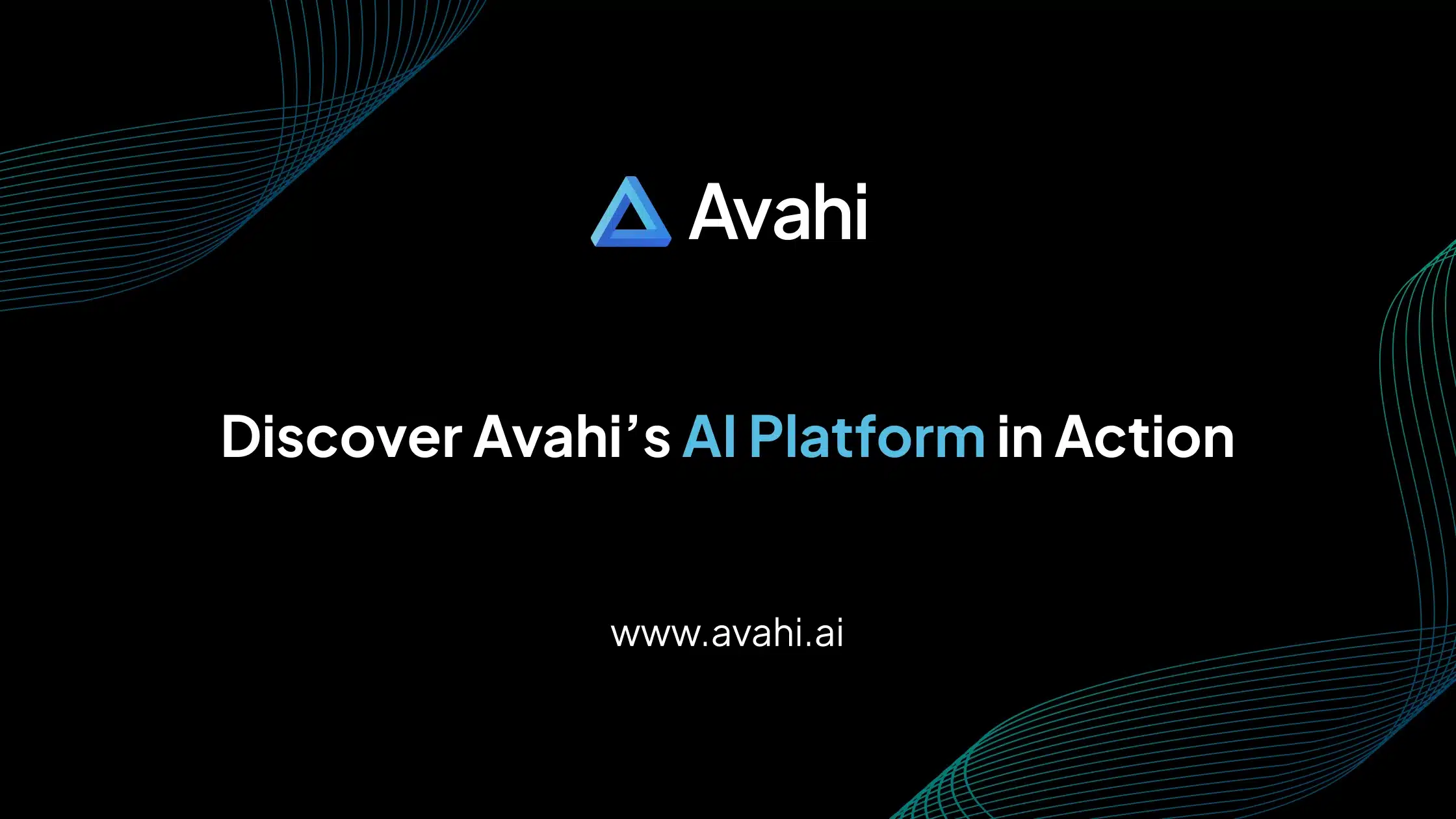Every unanswered patient call is a missed opportunity and a potential risk.
Healthcare is in a pressure zone. Patients expect faster, more personalized service. Staff are overwhelmed with repetitive, time-consuming tasks. And call centers, still the front line of communication, are stretched beyond capacity.
Healthcare call centers face hold times averaging 4.4 minutes, well above acceptable thresholds, and an average call abandonment rate of 7%. That translates to hundreds of missed calls every day.. Every dropped call represents a missed appointment, delayed treatment, or frustrated patient, all of which erode trust, increase staff burden, and compromise outcomes.
AI voice agents are emerging as a critical solution, capable of handling thousands of routine calls, scheduling appointments, answering FAQs, sending reminders, and escalating complex cases to staff in real time.
But deploying the wrong vendor can lead to privacy risks, poor patient experiences, and costly rework. This blog explores how to identify the best AI voice agent for healthcare by focusing on compliance, accuracy, integration, and patient experience.
TL;DR
|
Understanding the Unique Demands of Healthcare: Why AI Voice Agents Face Higher Standards
Before evaluating vendors, it’s essential to understand why healthcare fundamentally differs from other industries when deploying AI voice agents. The risks are higher, the systems more complex, and the margin for error significantly smaller. Here are the core domain-specific constraints that raise the bar for voice AI in healthcare:
1. Regulation, Liability, and Risk
Strict regulatory frameworks like HIPAA govern healthcare, and every interaction involves legal and clinical responsibility. If an AI voice agent misinterprets a symptom or fails to escalate an urgent issue, it could expose the provider to malpractice claims or patient harm.
Vendors must ensure their systems are compliant, auditable, and built with safeguards to minimize clinical and legal risk.
2. Clinical Context and Domain Knowledge
General-purpose AI struggles in healthcare because it lacks an understanding of clinical nuance. Medical terminology, abbreviations, and symptom variations require specialized training.
Voice agents must also understand when a situation may require clinical triage, and avoid offering medical advice unless explicitly designed and validated for that use. Without strong domain grounding, the risk of misinformation or misdirection increases significantly.
3. Workflow and System Interoperability
Healthcare organizations operate within tightly integrated systems, electronic health records (EHRs), practice management systems, telephony platforms, and call centers. An AI voice agent must be able to plug into these systems seamlessly.
This includes reading and writing data from EHRs, syncing with scheduling tools, and routing calls through existing telephony infrastructure. Poor integration leads to fragmented workflows and low adoption.
4. Trust, Human Fallback, and Escalation Logic
Patients and staff must trust that the AI will know its limits. A safe voice agent can identify uncertainty, escalate appropriately, and hand off to a human without friction. Escalation isn’t just a feature; it’s a requirement.
Whether the conversation involves potential medical issues or administrative complexity, the AI must be designed to step aside when needed and provide full context to the human agent taking over.
5. Continuous Monitoring, Auditability, and Transparency
Healthcare demands accountability. Every interaction may need to be logged, reviewed, or audited, whether for quality assurance, compliance, or legal defense.
Vendors should provide tools for real-time monitoring, detailed transcripts, analytics, and traceable decision paths. Transparent systems also allow healthcare teams to tune performance, identify errors early, and maintain control over patient communication.
Selecting the Best AI Voice Agent for Healthcare: What to Evaluate and Why
Here is a list of essential criteria to help you choose the best AI voice agent for healthcare, ensuring it meets clinical, operational, and compliance needs.
1. Healthcare-Specific Compliance and Security Standards
Healthcare organizations handle highly sensitive patient information, and any system that interacts with this data must meet strict privacy and security standards. Regulations like HIPAA (in the U.S.), HITRUST, and GDPR (for organizations handling EU data) set clear expectations for how data should be collected, stored, and shared.
Failure to comply can result in severe legal, financial, and reputational damage. An AI voice agent vendor must demonstrate not only awareness of these standards but also proven compliance through their platform design, infrastructure, and operational processes.
What to Look For
HIPAA-Compliant Infrastructure
Ensure the vendor’s systems are built to meet HIPAA requirements. This includes proper data handling protocols, secure storage environments, and physical safeguards for servers and data centers. Vendors should be able to provide documentation verifying compliance.
Data Encryption (In Transit and At Rest)
All patient data must be encrypted both while being transmitted and while stored. Encryption helps prevent unauthorized access or breaches. Ask vendors about their encryption standards (e.g., AES-256) and key management practices.
Audit Logging and Access Controls
Every data access or system action should be logged. This creates a traceable record of who accessed what data and when. Vendors should also offer granular access controls, ensuring that only authorized personnel can view or modify sensitive information.
Business Associate Agreement (BAA) Readiness
A compliant vendor should be prepared to sign a BAA, which legally binds them to protect patient information according to HIPAA standards. Refusal or hesitation to sign a BAA is a serious warning sign.
2. Clinical and Administrative Use Case Readiness
In healthcare, not all conversations are alike. Some are routine, like confirming appointments, while others carry clinical weight, such as checking symptoms or managing follow-up care.
A voice AI vendor must go beyond generic capabilities and demonstrate readiness to handle both clinical and administrative workflows safely and effectively. Solutions that aren’t built for healthcare can miss critical nuances or require heavy customization that slows down deployment.
What to Look For
Pre-Built Healthcare Workflows and Intents
Look for vendors that offer out-of-the-box capabilities tailored to healthcare scenarios—such as appointment scheduling, insurance verification, medication reminders, pre-visit check-ins, and post-discharge instructions. These should be ready to use or easily configurable, reducing the need for costly custom development.
Understanding of Clinical Interactions
Voice agents that handle symptom-related or care management conversations must be trained in medical language, triage logic, and patient safety triggers. Even if the agent doesn’t make clinical decisions, it must recognize when a situation needs escalation.
Integration with EHRs and Patient Portals
The agent should be able to pull and update data from electronic health records (EHRs), patient portals, or practice management systems. This allows real-time updates to appointments, patient demographics, or instructions—without duplicating work.
Support for Multimodal Use Cases
A voice AI that works across IVR, mobile apps, and web chat gives providers more flexibility. Vendors that offer omnichannel support are better positioned to serve different patient preferences and operational needs.
Proven Use Cases and References
Ask for case studies or client references that show successful deployments in real healthcare settings. This should include measurable results like call deflection rates, reduced wait times, or improved patient satisfaction.
3. EHR and Practice Management System (PMS) Integration
AI voice agents don’t operate in a vacuum. To be useful in healthcare, they must connect directly with the systems clinicians and staff rely on every day, Electronic Health Records (EHRs) and Practice Management Systems (PMS).
Without deep, reliable integration, voice agents become disconnected tools that add friction rather than reduce it. True value comes when the AI can read, write, and act on real-time data from these core systems.
What to Look For
Out-of-the-Box Integrations with Major EHRs and PMS Vendors
The vendor should support rapid integration with leading platforms like Epic, Cerner, Athenahealth, Allscripts, or NextGen. This speeds up deployment and minimizes the need for custom interfaces.
API Flexibility and FHIR Compatibility
The voice agent should be built with open API frameworks and support FHIR (Fast Healthcare Interoperability Resources) standards. This ensures future-proofing and compatibility with evolving digital health ecosystems. Flexible APIs also allow integration with custom workflows and third-party tools.
Proven Integration Case Studies
Ask vendors to share concrete examples of successful integrations with EHRs or PMS platforms. Look for specifics, such as what data was accessed, how it was used in workflows, and what operational impact it had (e.g., reduced manual entry, fewer scheduling errors).
4. Accuracy, Natural Language Understanding (NLU), and Voice Quality
If an AI voice agent mishears a symptom, misunderstands a question, or responds in a robotic tone, it can immediately erode trust. Patients expect clear, human-like interactions, and staff need to rely on the AI to interpret input accurately. Precision in language understanding, especially with clinical terms, is essential for safety, satisfaction, and adoption.
What to Look For
Multilingual and Accent-Sensitive NLU
The AI must handle multiple languages and recognize a variety of accents, dialects, and speech patterns. This is especially important for diverse patient populations. Look for vendors with demonstrated success across different language groups and regional variations.
Contextual Understanding of Medical Terminology
Healthcare conversations often include abbreviations, medication names, and complex symptom descriptions. The voice agent must be trained to interpret these terms within context, not just match keywords. For example, understanding the difference between “chest pressure” and “chest pain” can be clinically significant.
Customizable Voice Personas
Patients respond better to voices that feel empathetic and human. Vendors should offer the ability to choose or design voice profiles that align with your brand tone—calm, professional, friendly, etc. These voices should also support proper pronunciation of medical terms and patient names.
Benchmark Metrics (e.g., Word Error Rate, Intent Accuracy)
Reliable vendors should share performance metrics like Word Error Rate (WER), Intent Recognition Accuracy, and Confidence Thresholds. These help you evaluate the system’s precision in understanding input and correctly routing conversations.
5. Patient Experience and Accessibility
Technology in healthcare should reduce barriers, not create new ones. An AI voice agent must improve the patient experience by being easy to use, responsive to diverse needs, and accessible to all. If patients feel confused, stuck, or ignored, they’ll either abandon the interaction or call back for human support, defeating the purpose of automation. A well-designed agent should feel like a helpful assistant, not a frustrating gatekeeper.
What to Look For
Omnichannel Support (Voice, SMS, IVR, Chat)
Patients interact through different channels depending on their preferences and needs. A strong AI voice solution should support consistent experiences across phone calls, text messages, mobile apps, and web chat. This flexibility increases reach and convenience.
ADA and Section 508 Compliance
The system should be designed to accommodate patients with disabilities, including visual, hearing, cognitive, and motor impairments. Compliance with Americans with Disabilities Act (ADA) and Section 508 guidelines ensures that the technology is usable by people with assistive devices or special accessibility needs.
Support for Multiple Languages and Age Groups
The voice agent should be able to handle multilingual interactions, including both commonly spoken and regionally significant languages. It should also be usable by patients of all ages, from younger users familiar with digital interfaces to older adults who may be less tech-savvy.
Human-Like Escalation Protocols
When the AI reaches its limits, due to complexity, emotional cues, or clinical concerns, it must know when and how to escalate to a human. This process should feel natural, with no need for the patient to repeat information. Smooth handoffs are essential for maintaining trust and continuity.
6. Vendor Maturity, Reputation, and Healthcare Expertise
A vendor with a solid track record in healthcare is more likely to deliver a stable, secure, and effective solution. In contrast, an inexperienced or early-stage vendor may lack the tools, support, or reliability needed for high-stakes environments.
What to Look For
Years of Experience in Healthcare AI
Look for vendors with a proven history of working in healthcare—not just general AI or customer service automation. Their team should include individuals familiar with healthcare operations, compliance, and clinical workflows.
Healthcare Client Base and Case Studies
Ask for specific examples of live deployments with hospitals, clinics, or health systems. Review case studies with metrics such as call resolution rates, patient satisfaction scores, or staffing efficiencies to verify real-world success.
Recognition by Trusted Industry Bodies
Vendors that have been reviewed or recognized by organizations like KLAS, Gartner, HIMSS, or CHIME have undergone some level of third-party validation. This can be a good signal of credibility.
Customer Support, Training, and Onboarding Quality
Successful implementation depends not only on the product but also on the support team behind it. Evaluate whether the vendor offers dedicated implementation managers, training for clinical and admin staff, ongoing technical support, updates, and clear escalation paths for troubleshooting.
7. Customization, Scalability, and Total Cost of Ownership (TCO)
Healthcare systems vary in size, structure, and patient needs. A one-size-fits-all AI voice agent rarely works at scale. You need a solution that can adapt to your workflows, grow with your organization, and deliver long-term value, not just quick wins.
Beyond the upfront price, the total cost of ownership includes ongoing support, updates, integration effort, and the ability to scale across departments or facilities without rebuilding from scratch.
What to Look For
Configurable Workflows Without Deep Technical Effort
The platform should allow your team to customize scripts, routing logic, escalation paths, and conversation flows without writing code. Easy-to-use interfaces or admin panels empower internal teams to manage and optimize the agent without always relying on vendor support.
Flexible Pricing Models and Clear Cost Structure
Look for transparent pricing, whether per user, per interaction, or subscription-based. Vendors should outline all potential costs: licensing, setup, integrations, training, and support. Avoid solutions that hide essential features behind paywalls or complex contracts.
Scalability Across Sites and Use Cases
Can the system expand from a pilot to a multi-location rollout? Can it handle high call volumes during peak periods? Choose a platform that’s been tested in both small clinics and large enterprise health systems to ensure scalability isn’t just theoretical.
SLA Guarantees and Performance Benchmarks
Vendors should commit to Service Level Agreements (SLAs) covering uptime, latency, and support response times. These guarantees provide accountability and help maintain performance as usage grows.
Why Avahi AI Voice Agents Stand Out as a Trusted AI Voice Agent for Healthcare?
When evaluating vendors, healthcare institutions should look for credible solutions that already align with the domain’s demands. Here’s how Avahi AI Voice Agent addresses significant healthcare requirements, and where decision makers should probe further.
1. Secure, Compliant AWS‑Based Infrastructure
Avahi deploys on Amazon Web Services, with encryption both in transit and at rest, role-based access controls, and built-in auditability. Avahi AI voice agents support HIPAA‑ready voice capability by combining AWS HealthLake and Amazon Connect, keeping Protected Health Information (PHI) within the customer’s AWS account. This design helps with regulatory alignment and data segregation.
2. Integration with Phone, CRM, and Scheduling Systems
Avahi describes connecting telephony systems (phone lines), calendars, CRMs, and ticketing platforms, as well as routing calls according to business logic. This suggests it can slot into existing workflows rather than force a parallel infrastructure. The platform allows configuring intents, booking windows, routing, fallback rules, and handoffs.
3. Real‑Time Automation with Logging and Analytics
The Avahi AI voice agents can auto-create leads or tickets, send confirmations/reminders, log call outcomes, and provide real-time analytics. Because healthcare requires audit trails, this capacity supports transparency and quality monitoring.
4. Scalability and Phased Deployment
Avahi offers a path to launch with one line or use case and expand over time. Avahi AI voice agents have flexibility, which is critical when rolling out new voice systems in high-risk environments: you can start small and iterate. Its architecture is built to handle peak volumes and after-hours traffic.
5. Multilingual and Accent Support
Avahi AI voice agents support diverse speech patterns and multiple languages, accommodating different accents in live environments. For a healthcare system with a diverse patient population, this capability is necessary to maintain accessibility.
6. Human Handoff and Escalation Logic
Avahi emphasizes seamless transitions to human agents; callers can request a human at any time, and the system maintains context for that handoff, which helps preserve continuity and avoids asking patients to repeat themselves.
Discover Avahi’s AI Platform in Action
At Avahi, we empower businesses to deploy advanced Generative AI that streamlines operations, enhances decision-making, and accelerates innovation—all with zero complexity.
As your trusted AWS Cloud Consulting Partner, we empower organizations to harness the full potential of AI while ensuring security, scalability, and compliance with industry-leading cloud solutions.
Our AI Solutions Include
- AI Adoption & Integration – Utilize Amazon Bedrock and GenAI to Enhance Automation and Decision-Making.
- Custom AI Development – Build intelligent applications tailored to your business needs.
- AI Model Optimization – Seamlessly switch between AI models with automated cost, accuracy, and performance comparisons.
- AI Automation – Automate repetitive tasks and free up time for strategic growth.
- Advanced Security & AI Governance – Ensure compliance, detect fraud, and deploy secure models.
Want to unlock the power of AI with enterprise-grade security and efficiency? Start Your AI Transformation with Avahi Today!
Frequently Asked Questions (FAQs)
1. What makes an AI voice agent suitable for healthcare settings?
A suitable AI voice agent for healthcare must meet strict compliance standards (like HIPAA), integrate with EHR systems, handle clinical and administrative tasks accurately, and offer safe fallback to human staff when needed.
2. How does an AI voice agent integrate with existing EHR systems like Epic or Cerner?
Top vendors provide out-of-the-box connectors or FHIR-based APIs that enable real-time data exchange between the AI system and your EHR. This allows for appointment scheduling, patient updates, and documentation without manual input.
3. Why is compliance so important when selecting the best AI voice agent for healthcare?
Healthcare data is highly sensitive. Vendors must demonstrate compliance with HIPAA, GDPR, and other privacy laws to ensure patient data is secure and to avoid legal and financial risk.
4. Can AI voice agents reduce call center workload in hospitals?
Yes. AI voice agents can automate high-volume tasks like appointment reminders, intake calls, and FAQs—freeing up staff to focus on more complex or urgent patient interactions.
5. How do I evaluate the total cost of ownership for an AI voice agent?
Look beyond the license fee. Consider implementation costs, EHR integration, training, support, scalability, and any additional charges for new features or usage growth.







